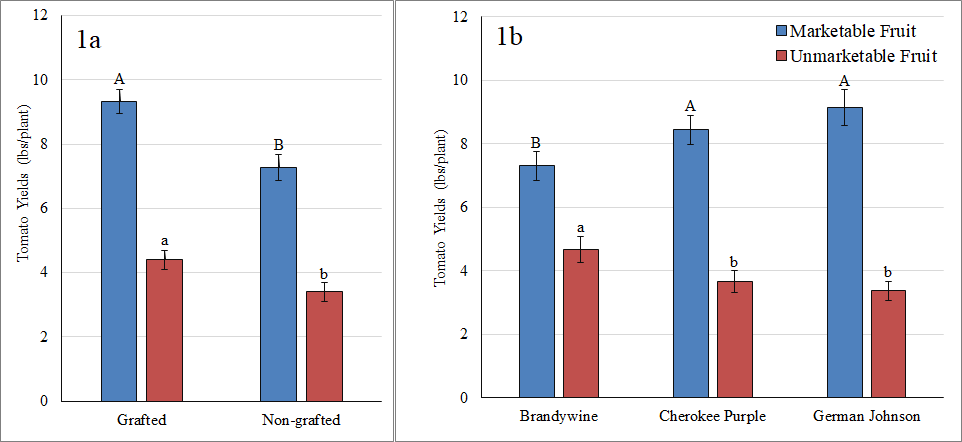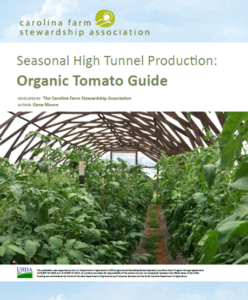by Gena Moore, CFSA Organic Research Coordinator, and Mark Dempsey, CFSA Farm Services Manager | Thursday, Apr. 29, 2021 –
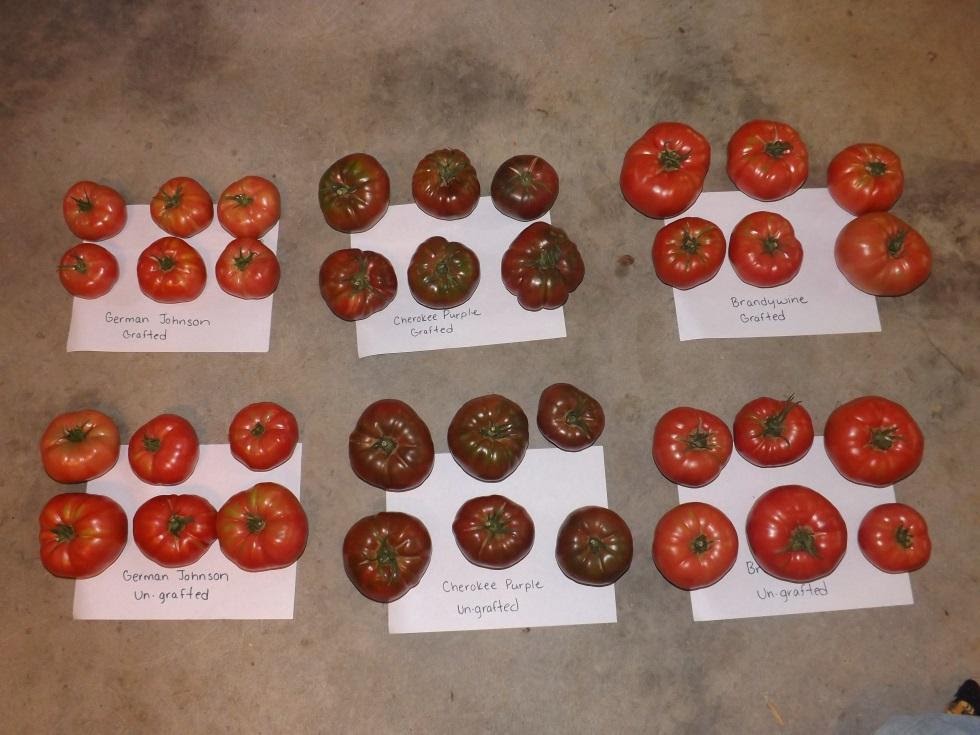
RESEARCH OVERVIEW
- Yield from three grafted heirloom tomato varieties with the same un-grafted varieties grown under plastic was compared at the Elma C. Lomax Research and Education Farm.
- Increased cost associated with grafted tomato production in high tunnels was evaluated to determine if yields justified costs.
KEY RESULTS
- Grafting improved both marketable and unmarketable tomato yields for all varieties.
- Higher marketable yields from grafted tomato plants more than offset the higher production costs associated with grafting, leading to a 21% ($863) increase in revenue for grafted plants compared to non-grafted plants.
- Marketable yields were significantly higher for German Johnson and Cherokee Purple varieties compared to Brandywine, which had a higher proportion of unmarketable fruit.
INTRODUCTION
While there has been some research conducted in North Carolina evaluating the performance of grafted heirloom varieties versus un-grafted, those studies evaluated heirloom performance using Maxifort as the rootstock. However, new commercially available rootstock varieties have entered the market. We evaluated the performance of heirloom varieties grafted on DRO141TX rootstock, developed to maintain high levels of production during long growing seasons with high temperatures, both of which occur when growing in high tunnels.
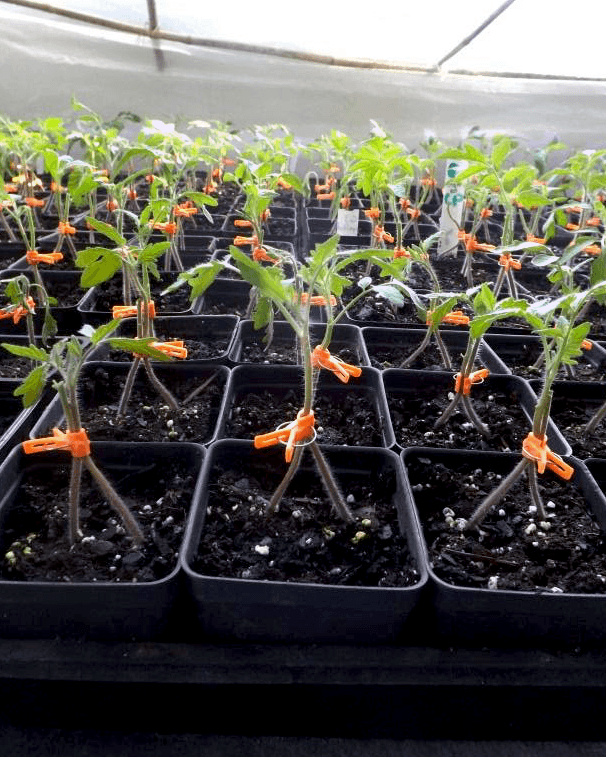 Newly grafted heirloom tomatoes in the healing chamber
Newly grafted heirloom tomatoes in the healing chamber
METHODS
The research was conducted in 2016 and 2017 in a high tunnel at the Elma C. Lomax Research and Education Farm (Lomax) in Concord, North Carolina. German Johnson, Cherokee Purple, and Brandywine tomato varieties were grafted onto DRO141TX on February 29 and March 1, 2016, and on February 28, 2017. Seeds for non-grafted treatments were started in the greenhouse on January 26, 2016, and January 27, 2017. Seedlings were transplanted into plastic mulch on March 22, 2016, and March 24, 2017. Plants were staked and tied according to the Florida method and pruned to two leaders. Plants were irrigated with a drip irrigation system daily.
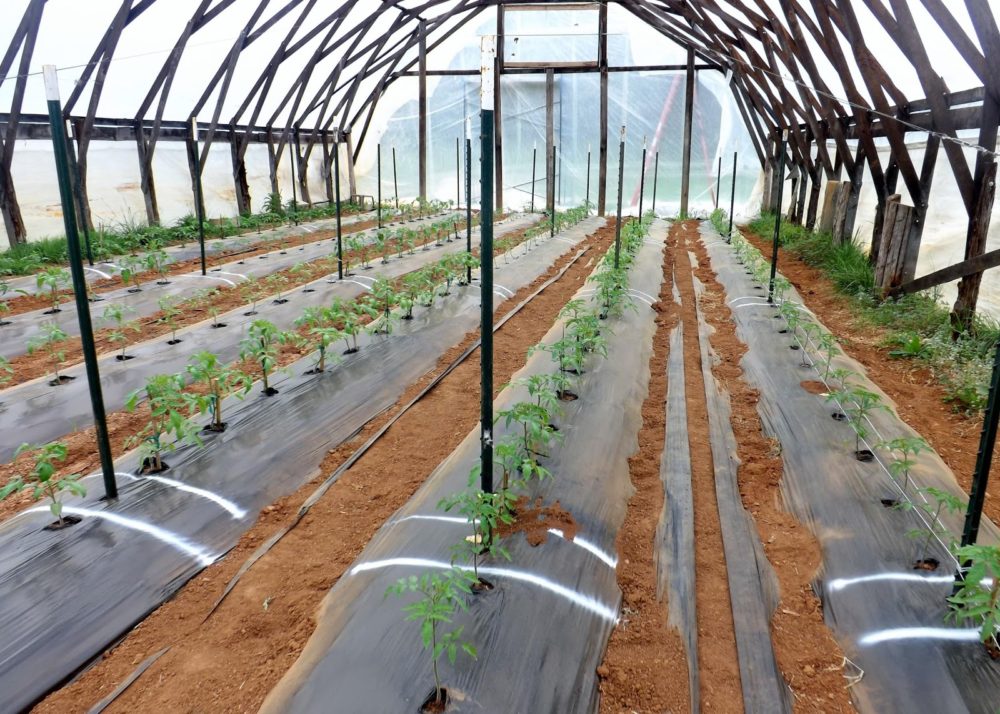 Grafted and un-grafted tomato plants three weeks after transplanting into a high tunnel
Grafted and un-grafted tomato plants three weeks after transplanting into a high tunnel
A complete randomized design was used for the experiment with six treatments replicated six times. Treatments included:
- Brandywine/DRO141TX
- German Johnson/DRO141TX
- Cherokee Purple/DRO141TX
- Brandywine
- German Johnson
- Cherokee Purple
Ripe fruit was harvested weekly and sorted as marketable, unmarketable (diseased, cracked, or zippered), or green, and then counted and weighed (Figure 1). Yield data were analyzed in R version 3.4.2 (R Core Team, 2017). Marketable and unmarketable fruit were analyzed separately; differences among treatments were tested using Linear Mixed EffectsModel ANOVA (package nlme), with block and year as random effects and grafting and variety as fixed effects, and means were separated using Estimated Marginal Means (package emmeans).
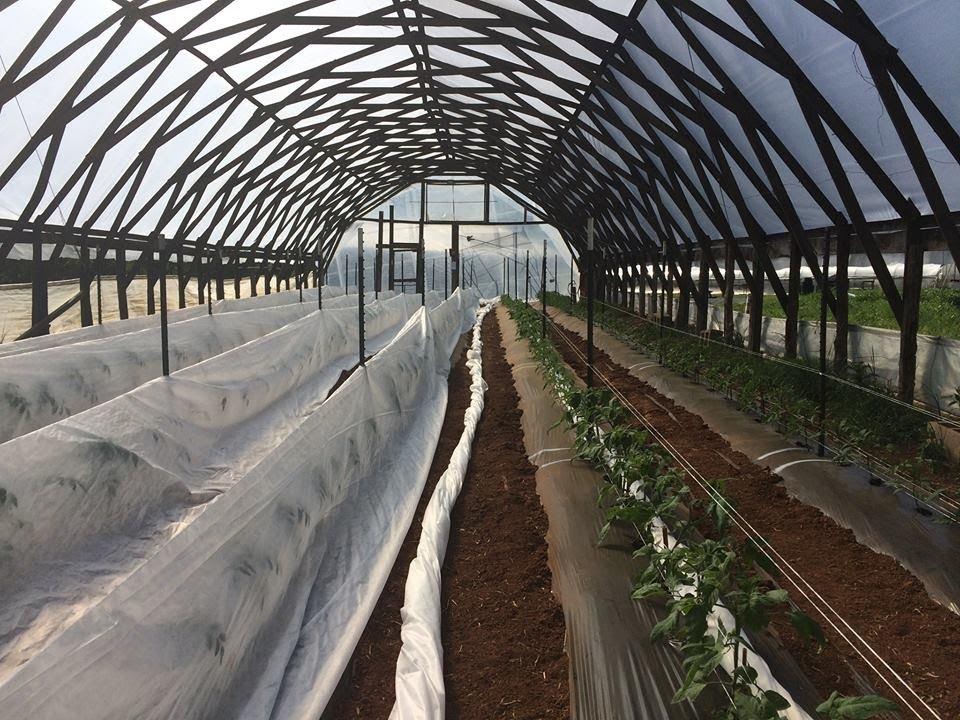
Tomatoes in a high tunnel with row cover
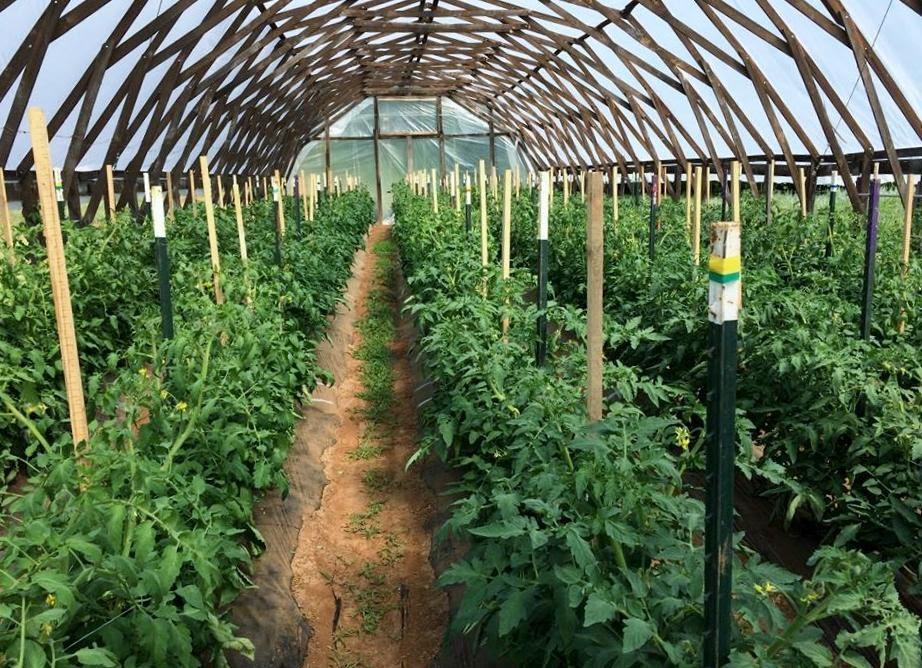
Grafted and un-grafted tomato plants in a high tunnel with Florida weave trellising
RESULTS
Grafting improved both marketable and unmarketable tomato yields for all varieties (Figure 1a). In general, Cherokee Purple and German Johnson performed better than Brandywine (regardless of grafting), and interestingly, unmarketable fruit yields were higher and marketable fruit yields were lower for Brandywine compared to other varieties (Figure 1b), indicating that Cherokee Purple and German Johnson are better candidates to maximize marketable yields relative to unmarketable yields. The effect of grafting on marketable and unmarketable yields was consistent across varieties (no significant grafting x variety interaction).
Figure 1. Tomato fruit yields (lbs per plant) of marketable and unmarketable fruit between grafted and un-grafted plants (1a) and among three varieties (Brandywine, Cherokee Purple, German Johnson; 1b). Data are averaged across years. Different letters indicate significant differences (p<0.05) between grafted/un-grafted and varieties; because marketable and unmarketable fruit were analyzed separately, uppercase letters are for marketable fruit, whereas lowercase letters are for unmarketable fruit. Error bars are standard error of the mean.
Plants showed signs of stress, including foliar discoloration and lesions, in May 2016. Diagnostic testing confirmed foliar damage caused by high soil salt content, a common issue with high tunnel production.
Plants also showed signs of stress, foliar discoloration, and plant death in June 2017. Diagnostic testing confirmed root-knot nematode damage on un-grafted plants. Following the last harvest in July 2017, high tunnel soil was solarized to reduce nematode damage in future crops and also included discussions on it in workshops.
The amount of time and inputs were recorded during both growing seasons in order to determine if the increased costs associated with grafted tomato production in high tunnels would be recovered through higher yields (Table 1).
Table 1. Estimated Economic Analysis for Grafted Versus Un-Grafted Tomato Production in a 30′ by 96′ High Tunnel
| ITEM | GRAFTED | UN-GRAFTED |
|---|---|---|
| Transplant Production | ||
| Labor | $505 | $70 |
| Supplies | $130 | $45 |
| Subtotal | $635 | $115 |
| In-Season Production | ||
| Labor | $1,540 | $1,540 |
| Supplies | $615 | $615 |
| Subtotal | $2,155 | $2,155 |
| PRODUCTION TOTAL | $2,790 | $2,270 |
| Return | ||
| Marketable Fruit | 1,880 | 1,545 |
| Revenue | $4,880 | $4,017 |
Notes on this table:
-
Based on 180 plants per 270 row feet in a 30’ by 96’ high tunnel.
-
Labor: Calculated at a rate of $15 per hour based on time valued by local farmers.
-
Revenue: Calculated on a rate of $2.60 per pound based on average 2017 organic tomato prices in the Southeast (USDA Market News, 2017).
CONCLUSION
The use of grafted German Johnson, Brandywine, and Cherokee Purple tomato plants in high tunnels can be an effective production method for farmers in North Carolina. Heirloom tomato plants are sought after for their flavor in many markets, however, due to disease susceptibility and low harvest amounts, many farmers avoid growing such plants. This research indicated that while input and labor cost for grafting transplants was greater than transplant production of un-grafted plants, higher marketable yields from the grafted plants compensated for the added cost of grafting.
- Peruse more of CFSA’s organic research
- Check out our Seasonal High Tunnel Production: Organic Tomato Guide
- Get in touch with the post authors:
- Gena Moore: gena@carolinafarmstewards.org
- Mark Dempsey: mark@carolinafarmstewards.org
This research was funded by a Specialty Crop Block Grant awarded by the North Carolina Department of Agriculture and Consumer Services.



